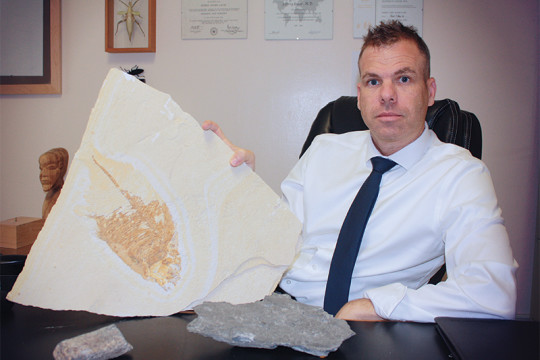
The lab coat or scrubs they wear do not define who they are.
Many SBH physicians have special passions, talents, and accomplishments that exist outside the hospital. As you’ll read here, these extracurricular interests are as wide ranging and diverse as the hospital itself.
The Paleonotlogist
Paleontology, or so it would seem, appears to be a rather safe and sedentary hobby.
Only tell that to Dr. Jeffrey Lazar.
“I was fossil hunting around the Chesapeake Bay in Maryland,” says Dr. Lazar, vice-chairman and medical director of the Department of Emergency Medicine. “While driving out to where I’d need to make a five-mile hike to get to some cliffs, I noticed a large number of pickup trucks sporting gun racks. When I stopped at a gas station to grab some coffee, I learned it was the first day of deer hunting season, and realized I would soon be tromping through the woods… wearing a dun-colored jacket and brown pants, afraid of looking way too much like a deer. I spent most of the hike chanting aloud, ‘Not a deer. Not a deer.’”
Dr. Lazar’s fascination with paleontology dates back to schoolboy field trips to the Museum of Natural History and a learning-to-read book with a Stegosaurus on the cover. A fan and student of Charles Darwin and evolutionary science, he began to dig for fossils a decade ago. Since beginning a formal collection, his travels have taken him to places like Lower Silurian Rochester Shale in upstate New York, to the high desert of Wyoming’s Green River Formation, and assorted sites in Kentucky, Texas, Florida and New Jersey. He’s currently preparing to do some diving off Florida’s gulf coast to search the sea floor for fossilized teeth from the Megalodon, an extinct species of shark that last lived over two million years ago, and could grow to an estimated length of 60 feet.
“I do a lot of advance research and reading and seek out local experts for tips,” he says. His tools of the trade may include crowbars, shovels, mallets, picks and/or goggles depending on the terrain.
He’s collected fossils from the Cenozoic through the Paleozoic eras: a time span that ranges from 40 to 400 million years ago. He keeps pieces from his collection in his office and in display cases in his apartment. He’s fond of the quotation by the American paleontologist Robert T. Bakker: “Fossils have richer stories to tell – about the lub-dub of dinosaur life – than we have been willing to listen to.”
He finds the hobby very rewarding, but admits that he needs to remain vigilant at all times.
“I was wading through the Peace River (on the mid-western coast of Florida), not too far from an area where a person had recently been eaten by an alligator,” he says. “Needless to say, I kept my guard and stayed in clear, shallow waters. Happily, the trip paid off: I had some great finds.”
 GIVING
GIVING (718) 960-9000
(718) 960-9000